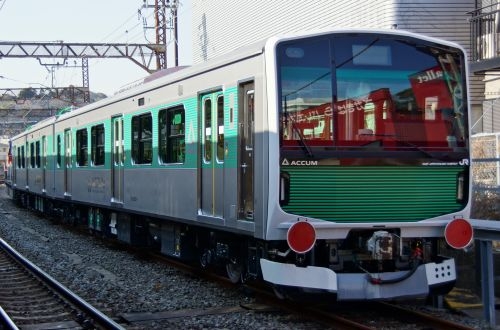The Series EV-E301 train will run as an emu on the 11.7km section from Utsunomiya to Hoshakuji which is electrified at 1.5kVdc enabling the batteries to be charged. The train will then switch to battery operation for the remaining 20.4km non-electrified section to Karasuyama. A short overhead catenary feeder section has been installed at Karasuyama station for battery charging.
The 100km/h train consists of two cars, each powered by two 95kW traction motors and fitted with a 600V 95kWh lithium ion battery. The train, which has a lightweight stainless-steel car body, was built by Japan Transport Engineering Company, formerly Tokyu Car Corporation, and now an affiliate of JR East, with Hitachi traction equipment and GS Yuasa batteries.
JR East started to develop a battery emu in 2009 by converting its Kumoya E995 battery dmu. Trials were conducted in 2012 on the Karasuyama line and on the Hachiko line near Tokyo. JR East says it plans to introduce battery emus on the Karasuyama line in the future.

